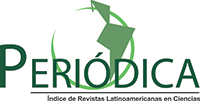Staphylococcus sp. colonization in workers from areas of hospital support: epidemiological and microbiological aspects
DOI:
https://doi.org/10.5216/ree.v18.29766Keywords:
Staphylococcus, Methicillin Resistance, Hospital Services, Occupational Health, Nursing CareAbstract
The objectives were to determine the prevalence of workers colonized by Staphylococcus sp., to identify colonization predictors and, to assess their susceptibility to antimicrobials. A questionnaire was applied and saliva was collected in 130 workers from support areas of an oncology institution. Microbiological analysis was conducted following standard procedures. The prevalence of workers colonized by Staphylococcus sp. was 37.7%, and the isolated majority was Staphylococcus coagulase-negative. Resistance to methicillin was detected in 35.1% of Staphylococcus coagulase-negative, being 12 epidermidis and one S. haemolyticus. From those. 92.3% had the mecA. gene. All S. aureus were sensitive to methicillin. Working shift and sector were identified as predictors for colonization. The colonization in workers from support areas assisting oncology patients indicates that workers should be target of occupational health policies, and it should include pre- and post-colonization measures in investigations/discussions of future studies aiming at worker and patient safety.Downloads
Download data is not yet available.
Downloads
Published
2016-03-31
Issue
Section
Original Article
License
Copyright (c) 2016 Revista Eletrônica de Enfermagem

This work is licensed under a Creative Commons Attribution 4.0 International License.














